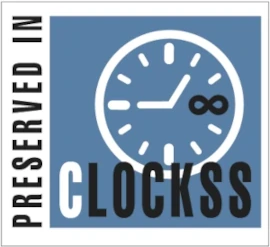Knowledge is Power, Ignorance is Bliss
Launch of Issue 13 of Anti-Trafficking Review, ‘Public Perceptions and Responses to Human Trafficking’
Guest Editors: Kiril Sharapov and Suzanne Hoff
Editor: Borislav Gerasimov
Despite the increasing volume of critical appraisals by NGOs, academics and activists, dominant anti-trafficking policy and media discourses continue to favour a series of simplistic binaries. These binaries (victim – criminal, legal – illegal, freedom – slavery) overlook the complexity of political, cultural, economic and individual contexts in which human trafficking and exploitation occur. Public awareness campaigns and tools informing the public how not to become a victim of human trafficking, or how to identify and report one reinforce these reductive narratives and do nothing to actually reduce human trafficking and deliver justice to survivors.
The new issue of the Anti-Trafficking Review reflects the growing unease and disagreements among anti-trafficking practitioners and scholars about the current state of public awareness of human trafficking: how and by whom such awareness is produced and manipulated, whom it is targeting, and whether it leads, or can lead, to any meaningful anti-trafficking action. The opening article, by Lauren Martin and Annie Hill, demonstrates how anti-trafficking awareness can be based on evidence, and not myth, through detailing the development of the communication strategy ahead of the 2018 Super Bowl in the US city of Minneapolis. The next three articles – by Kiril Sharapov, Peter Olayiwola, and Jen Birks and Alison Gardner – examine the public’s knowledge (and ignorance) of human trafficking at the national and local levels. Sharapov reports on the results of opinion surveys of the public’s knowledge of human trafficking in Great Britain, Hungary and Ukraine, and calls for the use of public opinion surveys as a way to evaluate the impact of awareness campaigns. Olayiwola offers a critique of awareness campaigns of child domestic work in South-West Nigeria, which are based on an assumption about the ignorance of human trafficking among children and their parents, while Birks and Gardner analyse newspaper reporting of human trafficking in the East Midlands region of the UK, as well as the results of focus group discussions with members of the general public. The final two thematic articles focus on the perceptions of trafficking created by ‘untraditional’ actors. Erin O’Brien and Helen Berents present a study of three games/apps created to raise awareness of human trafficking. Ilse A. Ras and Christiana Gregoriou analyse the metaphors used in corporate modern slavery statements published by three UK high street retailers about the measures they take to prevent and address exploitation in their supply chains. The issue ends with Jeremy Norwood’s review of the book Trafficked Children and Youth in the United States: Reimagining Survivors by Elżbieta M. Goździak, which outlines the book’s contribution to dispelling common myths about human trafficking in the United States and beyond.
Taken together, the articles in this special issue converge around one central message: overall, public perceptions of human trafficking—whether created by the media, NGOs, governments or corporations, and conveyed through campaigns, apps, newspapers or corporate statements—remain incomplete and, often, misleading regarding the nature of trafficking, its root causes and, consequently, its prevention. Despite their diversity, most awareness-raising messages fail to highlight these root causes and to call for structural reforms to the socio-economic and political systems that drive human trafficking and related exploitation.
View the new issue at www.antitraffickingreview.org
Watch a short video where Ilse A. Ras and Christiana Gregoriou speak about their article ‘The Quest to End Modern Slavery: Metaphors in corporate modern slavery statements’ here.
Watch a short video where Jen Birks and Alison Gardner speak about their article ‘Introducing the Slave Next Door’ here.



